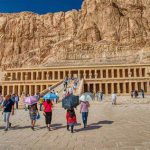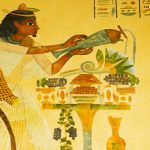Ancient Egyptian Technology
We’re going to know everything about Ancient Egyptian Technology in detail through this digital report from FTS blog.
Much could be credited to the ancient Egyptians, including some of the oldest types of technology and innovations that we still use presently. Those who were pioneers in astrophysics, arithmetic, pharmaceutics, dialect, or even architectural style. In reality, the list of creations in Egyptian Civilization can be very long and complicated.
Whilst also ancient Egypt is closely associated with pharaohs, sarcophagi, as well as pyramids, many ancient Egyptian discoveries are still used today.
Ancient Egyptian Technology
As a result, the ancient Egyptians were pioneers in architectural style, arithmetic, construction, dialect and writing, astrophysics, and pharmaceutics. Whilst also ancient Egypt is typically associated with trying to impose pyramids, remarkably well-preserved sarcophagi, and marvelously successful and rich ancient Egyptians, a technique was used in a pretty diverse range of industries. Let’s talk about Ancient Egyptian Technology
Attempting to write and paper
papyrus
The ancient Egyptians invented papyrus, which was the first type of sturdy piece of paper to write on. Because it was created from the papyrus plant, the substance was dubbed “papyrus.”
Papyrus was mainly used by the ancient Egyptians to record religious texts and other sensitive papers. Papyrus has been bulk in Egypt and sold to certain other ancient cultures, such as Antiquity, for documentation purposes.
Hieroglyphics
The ancient Egyptians were one of the first groups of individuals to write down career-high situations in life. The oldest type of writing was hieroglyphics, which were mere depictions that depicted a tale.
Mathematics
The legendary Giza pyramids of Egyptian Civilization needed sophisticated knowledge of math, particularly geometrical. Anybody who expressed doubt about this should take a glance at the crumbled pyramid at Meidum to see what happens to a huge construction proposal whenever the math goes very wrong.
State inventory levels and financial activities were both recorded using mathematics. Even the ancient Egyptians devised their number system.
Look here; Reasons Why You Should Plan an Egypt Trip in 2022
Astronomy
The Egyptians were adept at observing the evening sky. Their religious doctrine was influenced by the sky, celestial carcasses, as well aspects. Egyptians studied heavenly motion and built spherical mud-brick walls to artificially create perspectives to highlight the location of the sun at sunrise.
Spirit levels were also used to mark the summer and winter equinoxes.
Calendars
The ancient Egyptian calendar, which was premised on the twelve-month lunar calendar at the time, was created more than five thousand years ago. They divided the months into 3 years of four months each, which appeared to correspond with the Nile River.
This calendar, even so, was not precise enough. They quickly discovered that, while the river flooded every year at the end of June, the flood happened within a range of approximately days.
As a result, after having noticed that the river’s inundation and rising coincided with the heliacal rising of a star Sirius, they centred their year on the process of this star’s reemergence, successfully trying to apply astronomical precepts to create a more adjusted in such a way for tracking the times of the year.
Clocks
The ancient Egyptians were among the first to split days into equal portions by using time tracking devices. Sundials, shadow clocks, markets, as well as obelisks were among the first types of clocks.
Overall, the sunlight ascertained the passage of each day, and the role of the stars ascertained the passage of the nite.
Water clocks were used in ancient Egypt. These were bowl-shaped and had a tiny hole in the bottom. They floated on water and were ready to carry up in a way that the floodwater defined the passage of time.
Medicine
Some of the earliest advances in medicine were made by the ancient Egyptians. They developed a variety of medicines and cures for both human and animal ailments, as well as a thorough understanding of anatomy. This knowledge was used to preserve their dead during the mummification process.
Ancient Egypt produced one of the world’s earliest known medical texts. As it explains and tries to analyse the brain, it symbolises a source of illumination into neuroscience.
Medical effective treatments, on the other hand, proved elusive, and some of their medicinal practices were dangerous to their patient populations. A combination of people’s minds and syrup was used to treat eye problems, and a cooked mouse was recommended to treat coughing fits.
Agriculture
Because much of Egypt was arid, and air desert, agricultural production was essential to the kingdom’s continued existence. The ancient Egyptians created a system of technologies to maximise their agricultural production because they were heavily reliant on a narrow strip of marvellously fertile soil enhanced by the seasonal flooding of the Nile floods.
Look here; The best experiences in Egypt
Gaps tracking and Vessels
Because trade was such an important part of history societies, having operational vessels was critical. The ancient Egyptians used aerodynamics understanding in their building ships procedures to start creating ships which would capture the wind and propel ships through the water. They invented multiple sails that can be adapted to sail ships against the wind utilising side wind gusts.
Simple Machines, Tools, And Levers
Quarrying, hauling, and establishing so many momentous stone walls necessitated the use of a variety of simple computers to simplify the task and supplement the human effort. Simple construction computers used by the ancient Egyptians included the lever, counterbalance crane, and ratchet. Several of the principles and methods developed at the time are still commonly used in numerous building projects.
Numerous instances of building components have been discovered in tombs, ancient mines, and building sites. The most frequently used techniques here are made of stone, copper, as well as bronze. Stones, pick-hammers, mallets, as well as chisels, are examples of quarrying, stone starting to work, and building supplies. To keep moving bricks, stone blocks, as well as statues, larger techniques were developed.
What Technique Has Been Used in the Pyramids’ Construction?
Egyptologists and engineers are still perplexed by the innovations used in the building projects of the Great Pyramid. Organisational accts reminiscing facets of a building project provide scientists with insights into their methods and technologies. Led to the downfall of the Meidum pyramid, great care was taken to ensure that each step was carried out following the initial road map invented by Imhotep, the ruler of Pharaoh Djoser. Later inside the Old Kingdom, Weni, the Egyptian Governor of the South, had an inscribed sculpted describing in detail his journey to Elephantine to find the marble frames used to construct a false door for a pyramid. He explains why he directed the excavation of 5 towboat waterways.
Design of a Ship
The Nile River served as a natural transport route. Trade was important in ancient societies, and Egypt was the largest exporter and importer. It was crucial for Egypt’s social and cultural well-being to have entry to seafaring vessels and also boats able to navigate the Nile.
The ancient Egyptians used their knowledge of basic aerodynamic efficiency to create ships which might catch the air and propel themselves through the water effectively. They were the first ones to integrate stem-mounted rudders into their ships all through building projects. They also created a way of using rope trusses to enhance the honesty of one‘s ship’s struts using a variety of mainsail that could have been adapted to cruise their vessels against the wind.
Blowing Glass
Artefacts found in graves as well as during archaeological digs indicate that the ancient Egyptians possessed sophisticated glass-working skills. As early as the 15th century BC, in the New Kingdom, they have been making brightly coloured beads. Egyptian bottle, which was greatly regarded as a barter item, tried to give their traders a benefit in their ability to trade voyages.
Look here; Greatest Pharaohs in Ancient Egypt
Taking Stock of the Past
The ancient Egyptians invented or suited a range of technologies, from ink and papyrus to the stairways used to construct the Giza pyramids. Just about every aspect of society has been enhanced through the use of some type of electronic, many of which have been decided to apply on almost an industrial level.
Furniture
There is an indication that the Egyptians devised various pieces of wood. Beds, tables, and stools managed to recover from ancient Egyptian tombs are examples of ancient Egyptian artefacts then after much modern furniture is modelled.
Energy
Even though electricity was not introduced to the globe till much later, some scholars think there is enough evidence that the ancient Egyptians seemed to have some comprehension of energy. They allegedly saw electricity and conversed with electric fish, taking notes on the electric occurrences they witnessed.
One ancient Egyptian text mentions “high poles encased with copper,” something which assumes is an initial mention of battery-powered phenomena.
Make-up
Sometimes make-up originally came with ancient Egyptians, who wore it on both men and women. Whilst also make-up was mainly used for makeup as well as fashion reasons, it also did serve a functional function in that it shielded their skin from sun damage.
Perhaps their most well-known composition was the gloomy kohl that they wore around their eyes. Kohl has been created from soot and other nutrients and is the inspiration for modern eye makeup.
In Closing
We knew everything about Ancient Egyptian Technology in detail through the previous points, and we hope you like it too much dude.
Don’t hesitate to reach out to us, once you need to try a journey to Egypt.








